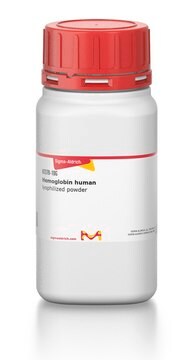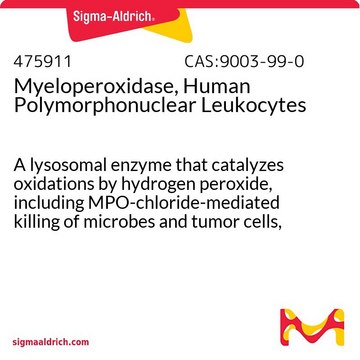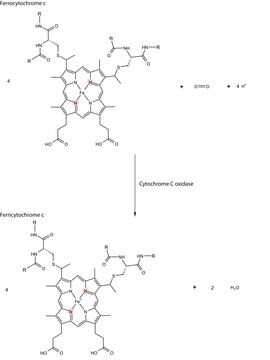A3672
Azurin
from Pseudomonas aeruginosa, lyophilized powder
About This Item
Prodotti consigliati
Origine biologica
Pseudomonas aeruginosa
Livello qualitativo
Forma fisica
lyophilized powder
Composizione
Protein, ≥65% Lowry
Concentrazione
≥65.0% (Lowry)
tecniche
toxicology assay: suitable
Solubilità
water: soluble 1—1.1 mg/mL, clear, blue (light blue to blue)
N° accesso UniProt
Temperatura di conservazione
−20°C
Informazioni sul gene
Pseudomonas aeruginosa ... AZU(878046)
Cerchi prodotti simili? Visita Guida al confronto tra prodotti
Descrizione generale
Applicazioni
- in the cytotoxicity and cell viability studies in human osteosarcoma cell line
- for the functionalization of silicon nitride cantilevers for interaction studies
- for coating gold surface and insulating functionalized oxide surfaces of silicon oxide and mica
Azioni biochim/fisiol
Stato fisico
Codice della classe di stoccaggio
11 - Combustible Solids
Classe di pericolosità dell'acqua (WGK)
WGK 3
Punto d’infiammabilità (°F)
Not applicable
Punto d’infiammabilità (°C)
Not applicable
Dispositivi di protezione individuale
Eyeshields, Gloves, type N95 (US)
Certificati d'analisi (COA)
Cerca il Certificati d'analisi (COA) digitando il numero di lotto/batch corrispondente. I numeri di lotto o di batch sono stampati sull'etichetta dei prodotti dopo la parola ‘Lotto’ o ‘Batch’.
Possiedi già questo prodotto?
I documenti relativi ai prodotti acquistati recentemente sono disponibili nell’Archivio dei documenti.
Il team dei nostri ricercatori vanta grande esperienza in tutte le aree della ricerca quali Life Science, scienza dei materiali, sintesi chimica, cromatografia, discipline analitiche, ecc..
Contatta l'Assistenza Tecnica.








